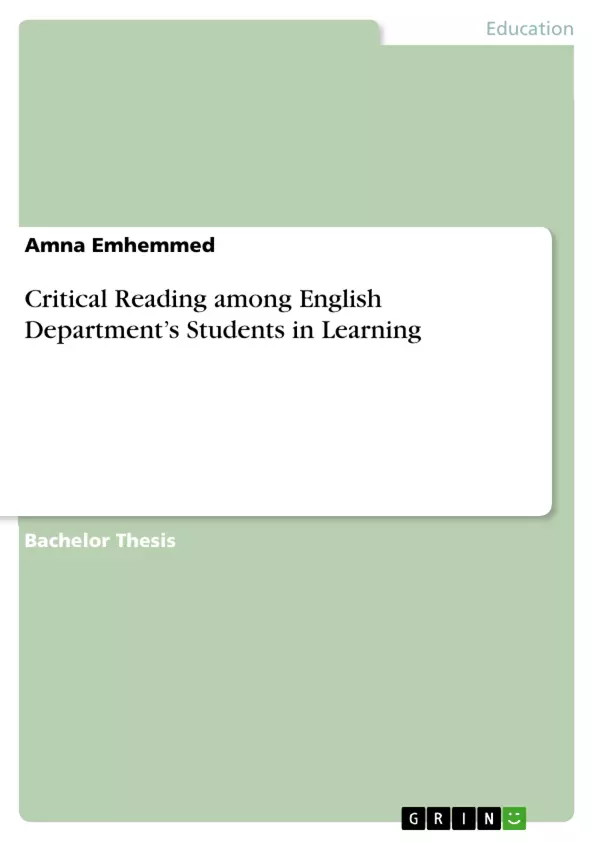Using Critical Reading in learning is as important as drinking water whenever you feel thirst. Using critical reading is the main focus of this paper and its aim is to check whether English Department’s students use critical reading as well as their teachers. This paper tested 40 respondents of English Department’s students and teachers of Faculty of Education (14 males – 26 females), the data of the questionnaires had been analysed by Microsoft Excel while the data of the interviews had been analysed by interpretation. The study found diversity in participants’ answers – between males and females and among selections themselves.
Inhaltsverzeichnis (Table of Contents)
- Acknowledgements
- Abstract
- Chapter I
- The Problem and Its Background
- Statement of the problem
- Hypotheses
- Significance of the Study
- Scope and Delimitation
- Review of Related Literature
- Critical Reading Definition
- Critical Reading Strategies
- Critical Reading Elements
- Related studies
- Method
- Research design
- Participants and Setting
- Research Instrument
- Procedure
- Results and Discussion
- Tasks as Class-Activities or Assignments
- The Nature of Examination's Questions
- Conclusion
- Recommendations
- References
- Appendices
Zielsetzung und Themenschwerpunkte (Objectives and Key Themes)
This study aims to investigate the use of critical reading skills among English Department students at Misurata University. It explores the extent to which both students and teachers utilize critical reading strategies in the learning process. The paper aims to understand if there are differences in critical reading practices among male and female students and faculty.
- Critical reading as a fundamental skill in learning
- The role of teachers in promoting critical reading
- Differences in critical reading practices among students
- The application of critical reading in various learning contexts
- The importance of engaging students in active reading
Zusammenfassung der Kapitel (Chapter Summaries)
Chapter I introduces the research problem and its background. It defines critical reading (CR) and its importance in everyday life and the learning process. The chapter explores the role of teachers as facilitators and motivators in fostering critical reading skills among students.
The Review of Related Literature chapter delves into the concept of critical reading, exploring its definition, strategies, and essential elements. The chapter also examines relevant studies that have investigated critical reading practices in various educational settings.
Schlüsselwörter (Keywords)
Critical reading, English language learning, student engagement, teacher facilitation, higher education, research methodologies, data analysis, academic discourse.
- Citation du texte
- Amna Emhemmed (Auteur), 2015, Critical Reading among English Department’s Students in Learning, Munich, GRIN Verlag, https://www.grin.com/document/386198



